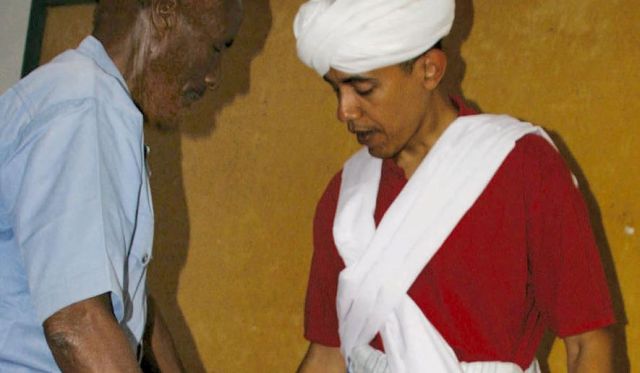In September of 1985 I arrived at Oakwood Friends School in Poughkeepsie, NY a 5’10”, 115 pound string bean. I was a boy, full of spirit and confusion. I’ve always been torn between my capacity for deep and profound love and a penetrating anger that occasionally gets the better of me. I swing between extremes. Oakwood is a Friends school, which is to say that it’s part of the Society of Friends, commonly known as Quakers. Oakwood wasn’t my first go around with Friends education. I was very fortunate to attend Moses Brown School in Providence, RI as a 3rd and 4th grader and came to know the genuine spirit of community, peace, and goodwill that’s typical of these sorts of places.
Friends education was always a good place for me. I thrive in communities committed to diversity, art, sharing, and openness. I don’t say that blind to the fact that almost anyone is capable of thriving in such a positive environment. It’s a privilege to be a part of something positive and alive. I bring it up because I often consider the possibility that, under different circumstances, the angry corner of my psyche may have manifested itself more prominently and it may have taken root so deeply that I could have been consumed. I have loving parents and siblings. I have wonderful friends and colleagues, but darkness sometimes consumes the light.
When I arrived at Oakwood, I soon met a man by the name of Jean Erick Joassaint. Erick, as he preferred to be called, was relatively short in stature, but “robust.” He was round to put it bluntly. He spoke English with a thick accent, in his native Haitian idiom. His personality was effervescent, as anyone who ever met him would tell you, and he smiled broadly from ear to ear as often as he drew breath. His presence was enormous in any space he occupied. Erick taught French. He spoke English, French, and Creole, and he was fluent in Latin and Ancient Greek. Until his death in May of 2016, I never really knew how old he was when I spent four years with him in the late-1980s. As it turns out he was born in 1947, the same year as my mother, which made him about 40-years old during that time, younger than I am now.
Erick was my French teacher, my soccer coach, my advisor, and remains the most important person I’ve ever met. It wasn’t the French. It wasn’t the coaching on the field. It wasn’t his help with my grades. Erick saw something of himself in me and took me under his arm. We spent countless hours talking about all the intellectual wonders of the world, and about politics. We talked about love, and sex, and friendships. We laughed so hard our bellies hurt. Erick recognized a kindred intellectual spirit in me, and we were both drawn to each other for our joie de vivre. We’re both the type to walk the Earth perpetually smiling, not as a mask to obscure, but as an expression of our love for this precious gift of life. It was crucial to my own salvation that Erick also saw my anger. He recognized the volcano bubbling just under the surface because he was burdened with his own. He caught me on more than one occasion succumbing to the weakness of my own tortured soul. He’d call out to me when he saw the look on my face, and he’d pull me aside. His face and voice were always enough to draw me back from the edge, and he taught me to put my anger away. I fail at this important act more than I’d care to admit. I still live with it, and wrestle with it, but I understand it thanks to Erick.
Mainly, I learned what principle and courage mean. Erick rarely shared stories about his past with the people around him. To my knowledge, he died having rarely discussed many of the horrors he witnessed. He was intensely private about them, even while being open and charming about all the joys he’d experienced over the years. I was privy to his inner sanctum because he sensed something of himself in me and he trusted me to use my intellect and my energy and my capacity to love with the world. His inscription in my yearbook has been a source of great encouragement throughout the years, even when it’s felt like something of a burden. He wrote, simply:
“You will be a great man.”
I’ve wrestled with what he meant when he wrote that to me. He wasn’t one to flatter or communicate in trivial sentiment. Did he mean that I would be great because I’m good? That I’d be kind to others and spread goodwill? Did he mean that I’d achieve big things? Was he trying to suggest that I’d be important in some way? At various times in my life, I’ve taken his short sentence to mean something different. In the end, it hardly matters. He wrote it and it’s stayed with me as I’ve felt the challenges of life bearing down on me. It’s served as a call to be good, and to achieve, and to take on important things. At this moment, the sentence seems to be more important than ever to me. When I learned of Erick’s death by Facebook, I wept uncontrollably for hours. I still well up thinking about the fact that he’s gone. His photo is the avatar on my Facebook profile as I type this, and stares back at me from the screen of my iPhone every time I turn it on. I still need him so desperately. I always thought I’d meet him again. That’s how things go sometimes.
In this moment, his example seems all the more important to me. Please read from the obituary written about his life, and you may see why.
Jean Erick Joassaint became involved in Haiti’s political community and anti-corruption effort in the late 60s while he was a student at the l’École Normale Supérieure.. He began to rise in popularity in Port-Au-Prince – drawing crowds and becoming a fixture on Jean Dominique’s Radio Haiti-Inter (formerly Radio Haiti). With the increased attention on his activism by local authorities, he was first arrested in Jérémie shortly after delivering a speech on the importance of universal education in Haiti. He was freed thanks to the intervention of the local Catholic Church.
Released on the condition that he would comply with government orders to stop all political activity – Jean Erick Joassaint defied this agreement and promptly resumed his anti-corruption activities again. Shortly afterwards, he was arrested once more and incarcerated at the feared ‘Fort Dimanche’ – a facility referred to as the ‘Dungeon of Death’. Jean Erick’s internment at Fort Dimanche caused many, including his then-fiance Marie Donie Joseph, to believe he was dead. Deprived of sleep, food, and subjected to beatings – Jean Erick never lost hope in justice prevailing. After several weeks with no outside communication he was released – bruised, starved, exhausted, but undeterred.He was always a tenacious leader and believed that what is right will always prevail, she he continued to advocate for the importance of education and political transparency. Now his work caught the attention of President Jean Claude “Baby Doc” Duvalier himself and after several warnings to stop his activities (he did not) he was held for five months at the notorious ‘Casserne Dessalines’ or ‘The Gulag of Haiti’ according to former colleague Jean Dominique.. There he endured violent interrogations, starvation, sleep deprivation. Once telling his daughter that Casserine Dessaline was the worst of all three of his internments – he never elaborated. The extent of the torture he endured will remain buried with him.
Amazed he still lived, his third release prompted his exile to the United States in the late 70s – where he continued his efforts to advocate for education and democracy in Haiti by writing for the Haitian expat newspaper “Haiti Observateur”. From the late 1970s to early 2000s he authored many articles criticizing government corruption in Haiti. During this time he authored four books: L’Ecole en Haiti (1978), Justin Lhérisson: Golimin et les Autres (1986), L’Haïti que j’aime (1992), and Jean-Bertrand Aristide: Le Pouvoir du Ressentiment (2004).However politics was not Jean Erick’s only passion – after his family, education was one of his greatest loves. He completed his Masters Degree in French Literature and was a post-doctoral candidate in French Philosophy and Literature at the University of Maryland. Continuing his pursuit of education, Jean Erick went on to teach French and Latin for over thirty years at Oakwood Friends School and Berkshire School as the Head of the Foreign Language Department. In 2008 and 2009 he published two French Vocabulary books for high school students.
With decades of education under his belt, Jean Erick retired from teaching life in 2013. He spent his short period of retirement devoted to charity and his family.
Jean Erick survived political imprisonment, torture, immigration, and other obstacles to live a rich life that he never took for granted. Despite the many passions my father had – his greatest love was his family; especially his wife Marie Donie and their children Daniel Erick and Emmanuelle “Manou” Josephe. He is survived by them as well as his sister Jocelyne Joassaint and four brothers Pierre-Marie, Louis Saint-Ange , Jean-Raymond, Jean-Francois Joassaint and their respective families. Jean Erick also leaves behind his grieving in-laws whom he loved and respected as his own.
Erick saw himself in me, and I see myself in Erick. I’ve never been closer to another person, and it strikes me that I’ve ended up in education as a direct result of his example. At the moment, being a “great man” means empowering other people to live their lives fully and happily. It means resisting the forces of destruction bent on oppression, which rob us of our peace of mind, and perhaps our freedom to pursue happiness. Greatness lies in the capacity to build, nourish, and support others and to resist rising tides of oppression. It means tapping into one’s inner strength by turning anger into loving defiance. I don’t know if anything of that makes a person great, but I feel convinced that believing in the greatness of the effort is what makes life worth living.
I miss Erick more than words can express, and I’ll never recover from his passing, but he held up a mirror more than 25 years ago and encouraged me to become what was good and great in him. I’ll do my best.




